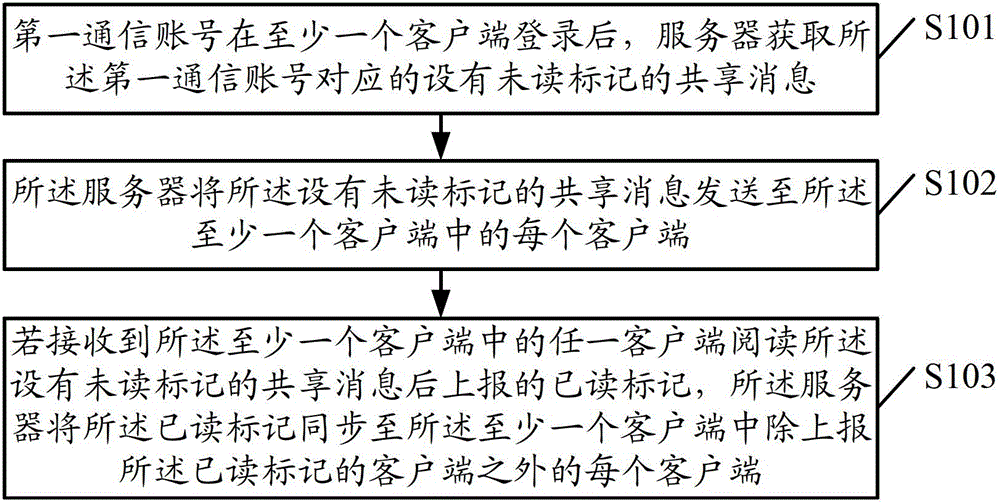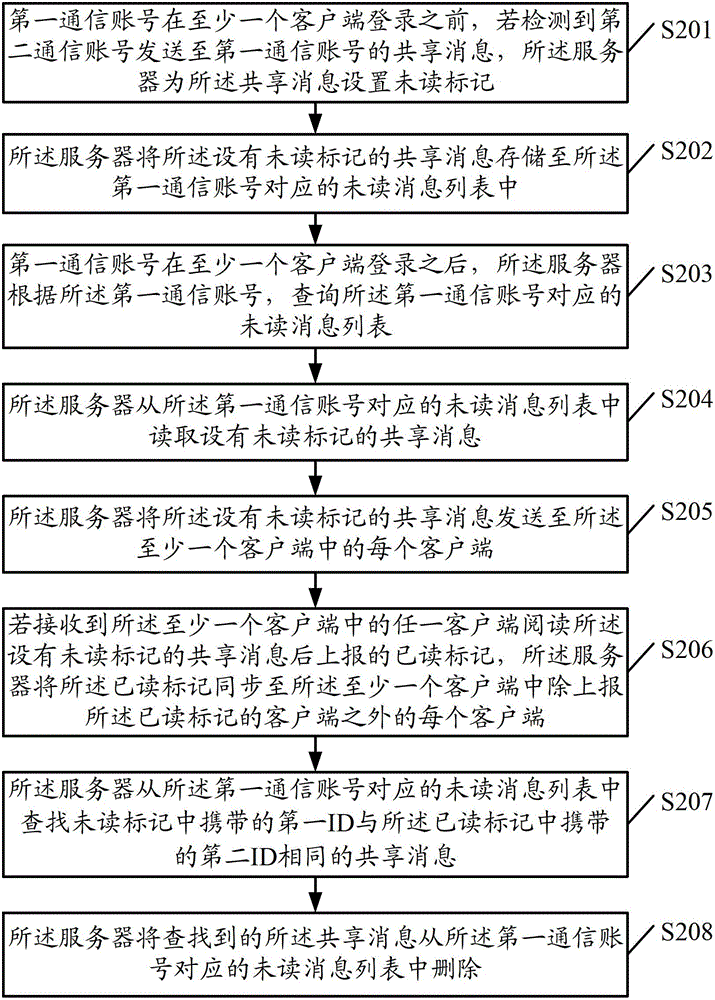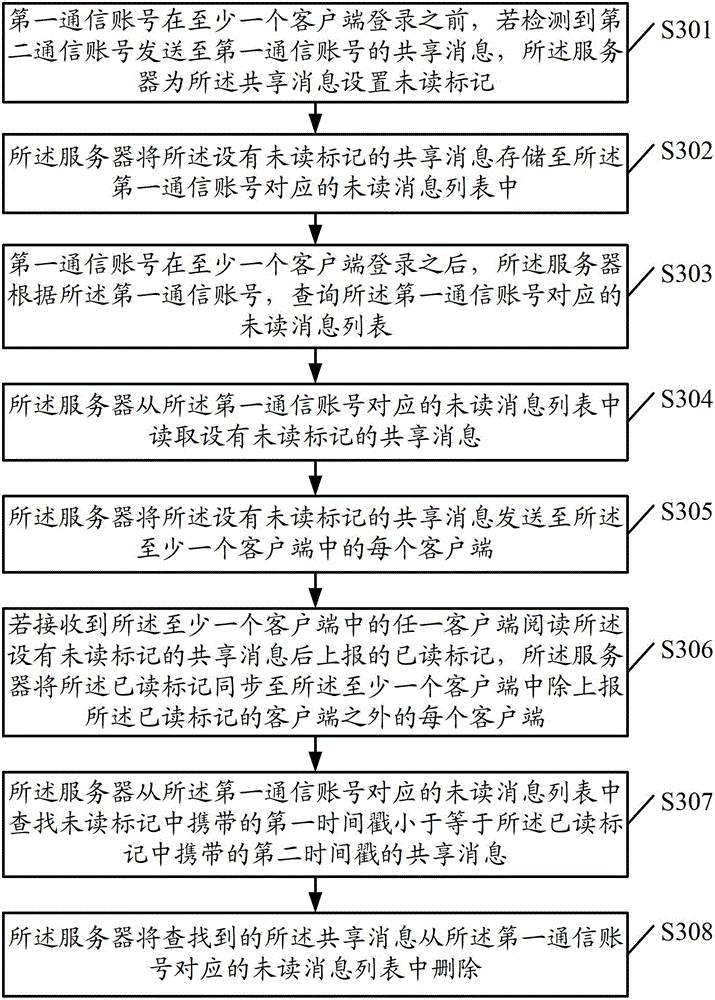Message synchronization method, system, server and client end
A client and server technology, applied in the transmission system, digital transmission system, electrical components, etc., can solve the problems that affect the user's reading experience of messages, achieve the effect of improving message reading experience, avoiding unread reminders, and improving intelligence
- Summary
- Abstract
- Description
- Claims
- Application Information
AI Technical Summary
Problems solved by technology
Method used
Image
Examples
Embodiment Construction
[0040] The following will clearly and completely describe the technical solutions in the embodiments of the present invention with reference to the accompanying drawings in the embodiments of the present invention. Obviously, the described embodiments are only some, not all, embodiments of the present invention. Based on the embodiments of the present invention, all other embodiments obtained by persons of ordinary skill in the art without creative efforts fall within the protection scope of the present invention.
[0041] In the embodiment of the present invention, the client may be any one of devices such as PC, mobile phone, smart phone, tablet computer, e-reader, and notebook computer.
[0042] The following will be combined with figure 1 - attached Figure 8 , the message synchronization method provided by the embodiment of the present invention is introduced in detail.
[0043] See figure 1 , is a flow chart of a message synchronization method provided by an embodimen...
PUM
 Login to View More
Login to View More Abstract
Description
Claims
Application Information
 Login to View More
Login to View More - R&D
- Intellectual Property
- Life Sciences
- Materials
- Tech Scout
- Unparalleled Data Quality
- Higher Quality Content
- 60% Fewer Hallucinations
Browse by: Latest US Patents, China's latest patents, Technical Efficacy Thesaurus, Application Domain, Technology Topic, Popular Technical Reports.
© 2025 PatSnap. All rights reserved.Legal|Privacy policy|Modern Slavery Act Transparency Statement|Sitemap|About US| Contact US: help@patsnap.com



